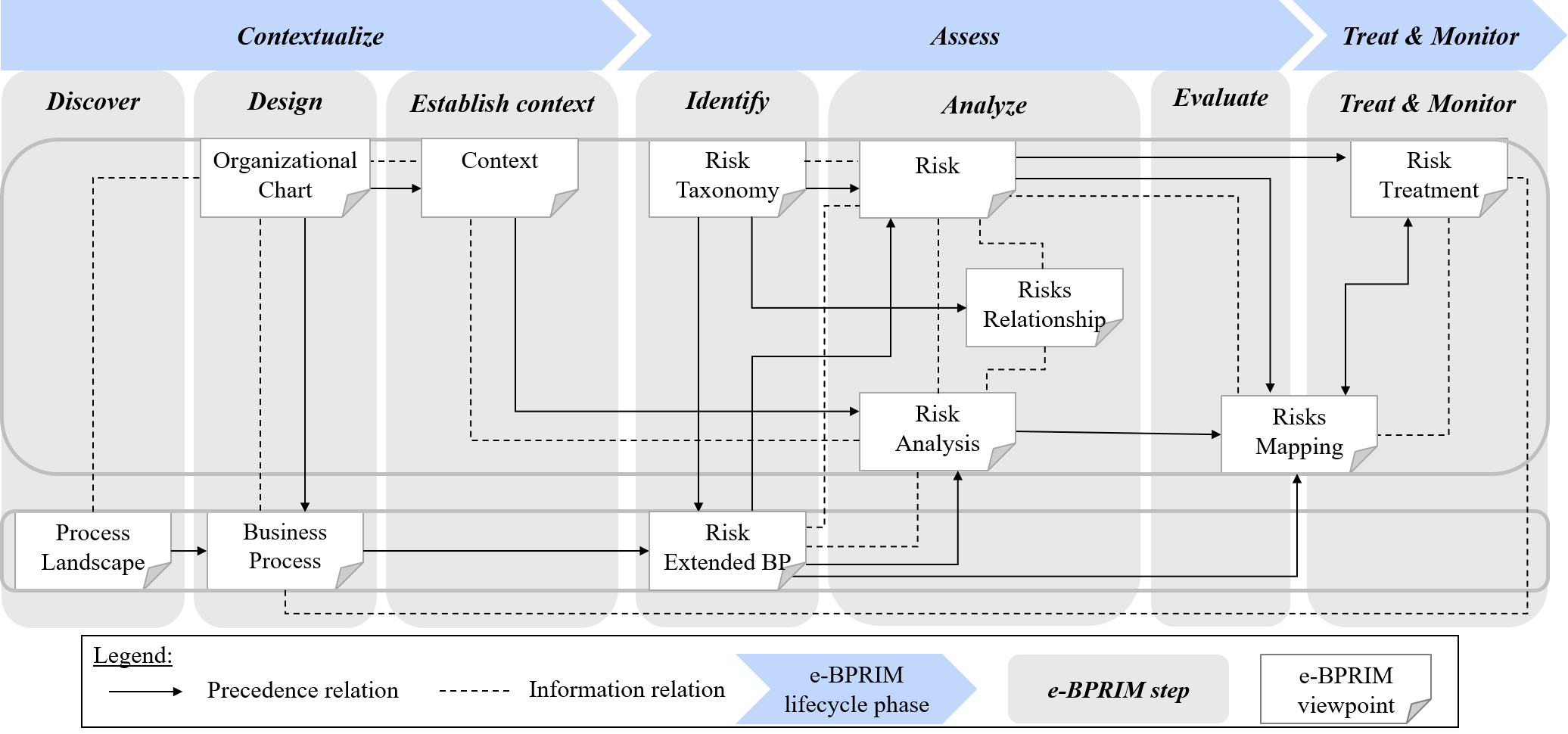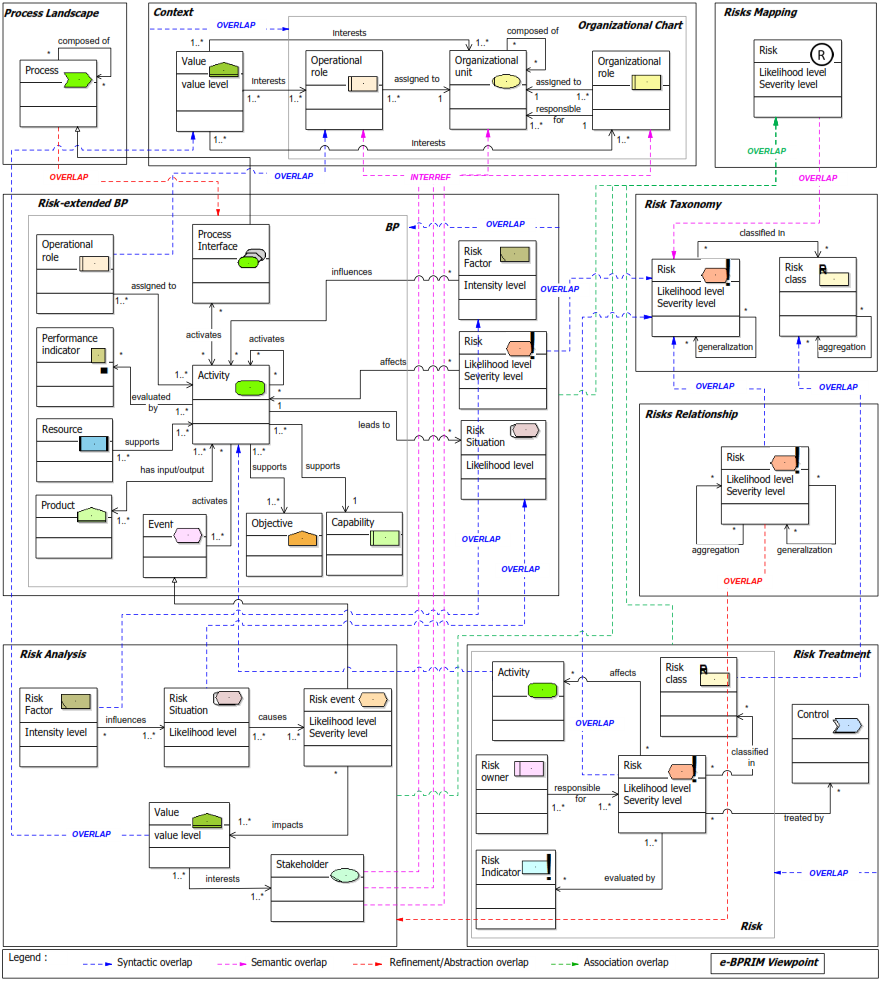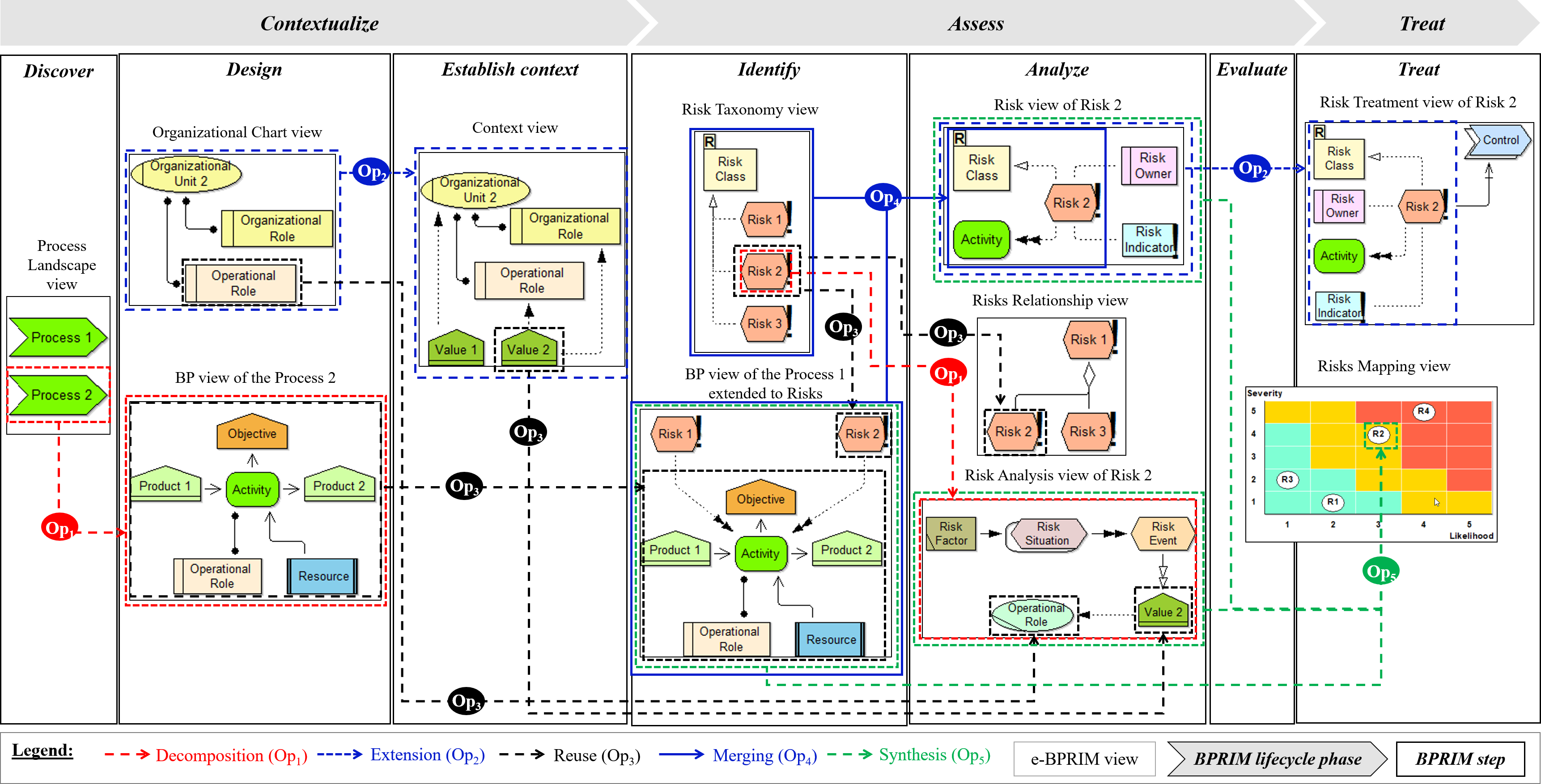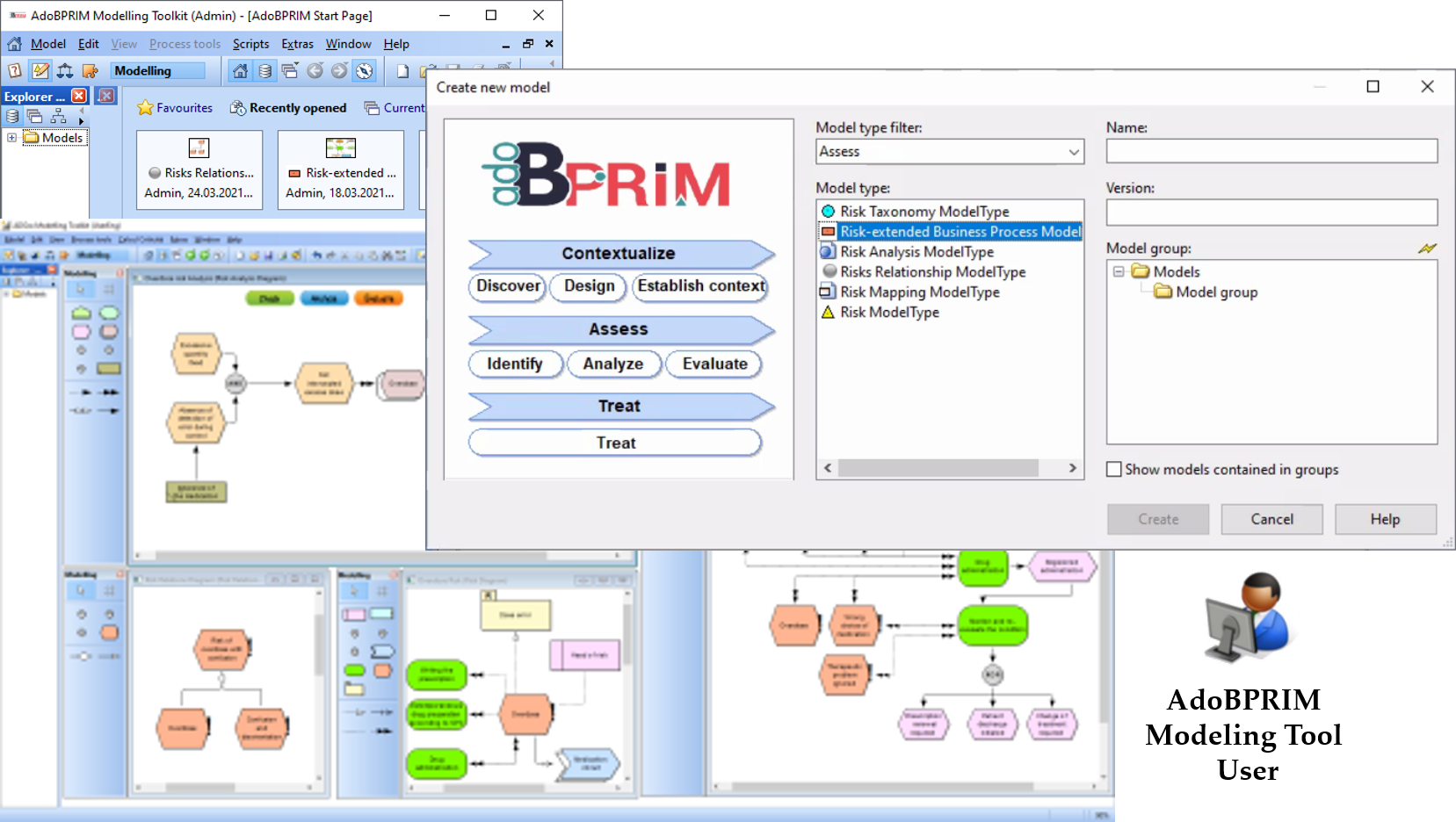Details
BPRIM - Business Process-risk management - Integrated Method
BPRIM is one of the important approaches in the Risk-aware Business Process Management (R-BPM) context. The BPRIM approach suggests an integrated process-risk management methodological framework with three components:
(1) A synchronized management lifecycle that consists of coupling steps of process management with those of risk management drawing upon an integration approach. The BPRIM lifecycle is an iterative cycle consisting of four main phases:
- The “Contextualization phase” aims to set up the context of the joint management of risks and processes.
- The “Assessment phase” aims to identify, analyze and evaluate risks with process consideration. The outcome leads to risk prioritization.
- The “Treatment phase” aims to propose risk treatment alternatives. This later can lead to reframing - meaning going back to the contextualization phase - which would require the implementation of risk handling actions.
- The “Monitor phase” aims to ensure that decisions regarding treatment options have been taken according to predefined instructions, allowing the appreciation of the effectiveness of risk management policies.
Considering information exchanged between these phases, a set of eleven viewpoints was identified.
(2) A conceptual unification between the business process conceptual model proposed by the ISO/DIS 19440 and a risk conceptual model. The BPRIM conceptual model puts forward a conceptual unification of risks and processes into a common meta-model allowing to comprehensively address the semantics of R-BPM artifacts.
(3) A modeling notation extending the ISO/DIS 19440 constructs with risk modeling constructs. The BPRIM conceptual model was used to define the abstract syntax of BPRIM Notation specific to the R-BPM domain. Graphic representations have also been proposed as a concrete syntax of this language and which reuses several e-EPC elements constructs and extends them with additional graphic symbols.
These three promising findings, namely BPRIM life-cycle, BPRIM conceptual Model, and BPRIM Notation, led us to design a dedicated modeling environment as a supporting tool and method for the BPRIM framework to facilitate its use and appropriation. Hence the birth of e-BPRIM, a multi-view modeling method for BPRIM, and AdoBPRIM, a modeling tool for e-BPRIM.
To conceptualize the e-BPRIM modeling method and develop the corresponding modeling tool, called AdoBPRIM, we follow the Agile Modeling Method Engineering (AMME) life-cycle which is compliant with the Design Science Research Methodology (DSRM).
e-BPRIM
e-BPRIM is a multi-view modeling method for BPRIM framework. Indeed, e-BPRIM digitizes and enriches the basic concepts introduced by the BPRIM framework, notably by defining a multi-view modeling procedure, a modeling language, and several algorithms and mechanisms.
e-BPRIM multi-view modeling procedure
The e-BPRIM multi-view modeling procedure introduces the sequence to be applied while creating and working with the eleven BPRIM viewpoints. The procedure structures viewpoints according to the BPRIM lifecycle phases “Contextualization”, Assessment, “Treatment”, and “Monitor”. The complete modeling procedure is illustrated in Figure 2.

Figure - 2 - e-BPRIM multi-view modeling procedure
e-BPRIM modeling language
The e-BPRIM modeling language is composed of abstract and concrete syntax. The abstract syntax is described by a meta-model based on the BPRIM conceptual model, called e-BPRIM meta-model. The concrete syntax is based on the BPRIM modeling notation and describes the graphical representation of each e-BPRIM meta-model concept, called e-BPRIM notation. It needs to be noted, that the e-BPRIM meta-model can be divided into eleven meta-models corresponding to the eleven viewpoints of BPRIM. Figure 3 shows an example of some BPRIM viewpoints meta-models annotated with corresponding notations. For example, a blue rectangle is used to represent the ``Resource'' concept.

Figure - 3 - Overview of e-BPRIM multi-view modeling meta-model, highlighting the meta-model of each viewpoint
e-BPRIM algorithms & mechanisms
The e-BPRIM algorithms and mechanisms support the e-BPRIM modeling procedure and also provide functionalities to use and evaluate viewpoints. In the following, we present a short description of some functionalities:
- Editing of eleven e-BPRIM viewpoints corresponding to the viewpoints depicted in Figure 2.
- Model-checking: this functionality ensures the validity/accuracy of created models by checking their structure according to several defined syntactic and semantic rules.
- Risk Assessment: the risk analysis model is analyzed and evaluated using a risk assessment matrix. The latter is a classical method to conduct a qualitative risk assessment. The objective of this mechanism is to automatically produce a risk matrix that visualizes the different risk levels.
- Multi-View Consistency: this functionality ensures the navigation & synchronization between all e-BPRIM viewpoints and between all objects in different models. This functionality aims to keep consistency between e-BPRIM viewpoints. In Figure 4, we present some of these functionalities:
- Decomposition: With this operation, a new view is considered as a more abstract representation of a given view.
- Extension: With this operation, a new view is created by extending an existing view with additional syntactic concepts.
- Reuse: With this operation, a new view is created by reusing one or several syntactic and/or semantic concepts from one or more existing views.
- Merging: With this operation, a new view is created by combining some syntactic concepts of two or more existing views. The provided view can also add new syntactic concepts specific to the viewpoint of the newly created view.
- Synthesis: With this operation, a new view is created by gathering the information of several views and then generating a synthesis view.
- Synchronization: This operation ensures the propagation of any modifications (i.e., create, edit or delete) performed on an overlapping concept in one view to be propagated in semantically equivalent operations that need to be automatically performed on all other views.

Figure - 4 - e-BPRIM views operations
AdoBPRIM Modeling Tool
AdoBPRIM is a computer-assisted modeling tool for the e-BPRIM multi-view modeling method based on the ADOxx meta-modeling platform. AdoBPRIM supports the e-BPRIM multi-view modeling procedure, the e-BPRIM modeling language, and e-BPRIM algorithms and mechanisms.

Figure - 5 - AdoBPRIM overview


